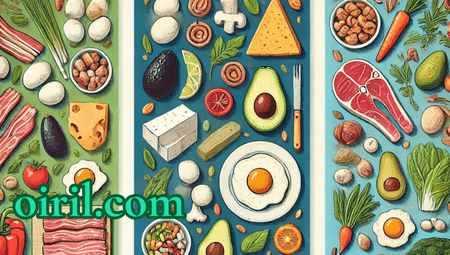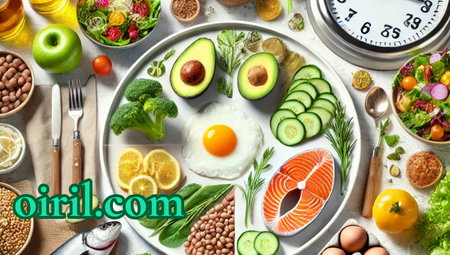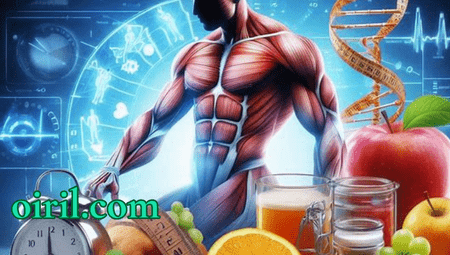In today’s world, where health and wellness are at the forefront of many people’s minds, diet plans are often the subject of discussion. Among the various approaches to diet and nutrition, three popular plans stand out: the Ketogenic (Keto) diet, the Paleo diet, and the Vegan diet. Each of these diets has its principles, benefits, and challenges, making it essential for individuals to understand their differences before committing to one. This article will explore the key characteristics of each diet, their potential benefits and drawbacks, and tips for implementation, helping readers make informed choices for their health.
1. Understanding the Diet Plans
1.1 The Keto Diet
The ketogenic diet, commonly known as the keto diet, is a low-carbohydrate, high-fat diet that aims to shift the body’s metabolism from relying on glucose (sugar) to fat for energy. This process is known as ketosis. The typical macronutrient distribution for a ketogenic diet is approximately 70-75% fat, 20-25% protein, and only about 5-10% carbohydrates.
Key Features of the Keto Diet:
- Low Carbohydrates: The diet restricts carbohydrate intake to about 20-50 grams per day.
- High Fat Intake: Healthy fats are emphasized, including avocados, nuts, seeds, and oils.
- Moderate Protein: Protein sources include meat, fish, eggs, and dairy.
1.2 The Paleo Diet
The Paleo diet, often referred to as the “caveman diet,” is based on the idea of eating as our ancestors did during the Paleolithic era. This diet emphasizes whole, unprocessed foods that would have been available to early humans. The macronutrient composition of the Paleo diet can vary, but it typically includes a balance of protein, healthy fats, and carbohydrates from fruits and vegetables.
Key Features of the Paleo Diet:
- Whole Foods: The focus is on natural, unprocessed foods such as meats, fish, fruits, vegetables, nuts, and seeds.
- Exclusion of Processed Foods: Refined sugars, dairy products, grains, and legumes are generally avoided.
- Emphasis on Healthy Fats: Sources of healthy fats include avocados, olive oil, and nuts.
1.3 The Vegan Diet
The vegan diet excludes all animal products, including meat, dairy, eggs, and any food derived from animals. Vegans focus on a plant-based diet, which includes fruits, vegetables, grains, nuts, and seeds. This diet is often adopted for health reasons, ethical considerations regarding animal rights, or environmental concerns.
Key Features of the Vegan Diet:
- Plant-Based Foods: The diet consists entirely of plant-based foods.
- Nutrient-Dense Choices: Emphasis is placed on fruits, vegetables, whole grains, legumes, nuts, and seeds.
- Avoidance of Animal Products: All forms of animal products, including honey, are excluded.
2. Benefits of Each Diet
2.1 Benefits of the Keto Diet
- Weight Loss: Many people experience significant weight loss on the keto diet due to the reduction in carbohydrate intake, which can lead to decreased appetite and increased fat burning.
- Improved Blood Sugar Control: The keto diet may help regulate blood sugar levels, making it beneficial for individuals with type 2 diabetes.
- Increased Mental Clarity: Some individuals report improved focus and mental clarity while in ketosis.
2.2 Benefits of the Paleo Diet
- Nutrient-Rich Foods: The Paleo diet encourages the consumption of whole, nutrient-dense foods that provide essential vitamins and minerals.
- Reduced Inflammation: The diet’s emphasis on whole foods and healthy fats may help reduce inflammation in the body.
- Balanced Blood Sugar Levels: By eliminating processed sugars and grains, many people find better blood sugar control.
2.3 Benefits of the Vegan Diet
- Weight Management: A plant-based diet is often lower in calories, which can aid in weight management.
- Lower Risk of Chronic Diseases: Research suggests that vegans may have a lower risk of heart disease, hypertension, and certain cancers.
- Ethical and Environmental Impact: Many people choose veganism for ethical reasons related to animal welfare and environmental sustainability.
3. Drawbacks of Each Diet
3.1 Drawbacks of the Keto Diet
- Nutrient Deficiencies: The restrictive nature of the keto diet can lead to deficiencies in essential nutrients found in fruits, vegetables, and grains.
- Keto Flu: Some individuals experience flu-like symptoms when transitioning to ketosis, known as the “keto flu,” which may include fatigue, headache, and irritability.
- Sustainability Issues: The strict limitations on carbohydrate intake can make the diet challenging to maintain long-term.
3.2 Drawbacks of the Paleo Diet
- Exclusion of Whole Food Groups: The avoidance of grains and legumes can lead to a lack of dietary fiber and essential nutrients.
- Cost Considerations: High-quality, grass-fed meats and organic produce can be more expensive, making the diet less accessible for some individuals.
- Potential for Overeating: The focus on high-protein foods may lead to overeating, potentially offsetting weight loss goals.
3.3 Drawbacks of the Vegan Diet
- Nutrient Deficiencies: Vegans may be at risk for deficiencies in vitamin B12, iron, omega-3 fatty acids, and protein if they do not carefully plan their diets.
- Social and Cultural Challenges: Following a vegan diet can present challenges in social situations, dining out, or attending events where vegan options are limited.
- Processed Vegan Foods: Many vegan alternatives are highly processed and may contain added sugars or unhealthy fats.
4. Implementation Tips
4.1 Tips for the Keto Diet
- Focus on Whole Foods: Choose whole, nutrient-dense foods rather than processed keto snacks.
- Stay Hydrated: Drink plenty of water and consider electrolyte supplementation, especially during the initial phase.
- Monitor Ketosis: Use testing strips or devices to monitor ketone levels and ensure you remain in ketosis.
4.2 Tips for the Paleo Diet
- Plan Your Meals: Create meal plans to ensure you are consuming a balanced variety of foods.
- Experiment with Recipes: Explore different cooking methods and recipes to keep your meals exciting.
- Listen to Your Body: Pay attention to how different foods affect your energy levels and overall well-being.
4.3 Tips for the Vegan Diet
- Educate Yourself on Nutrition: Learn about essential nutrients to ensure you are meeting your dietary needs.
- Incorporate Variety: Include a wide range of fruits, vegetables, grains, and legumes to achieve balanced nutrition.
- Consider Fortified Foods or Supplements: Look for fortified foods or consider taking supplements for nutrients like vitamin B12.
Conclusion
Choosing the right diet plan can significantly impact your health and well-being. The Keto, Paleo, and Vegan diets each offer unique benefits and challenges, making it essential to evaluate personal goals, lifestyle preferences, and nutritional needs before committing to one.
Whether your priority is weight loss, improved health, ethical considerations, or a combination of these factors, understanding the fundamentals of each diet can help you make informed decisions. Ultimately, the best diet is one that is sustainable, enjoyable, and aligns with your individual health goals. Always consider consulting with a healthcare provider or a registered dietitian before making significant dietary changes to ensure you choose the best path for your health.




